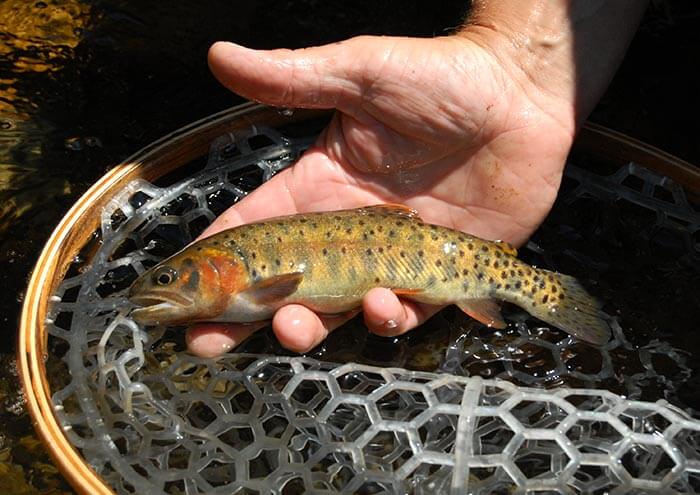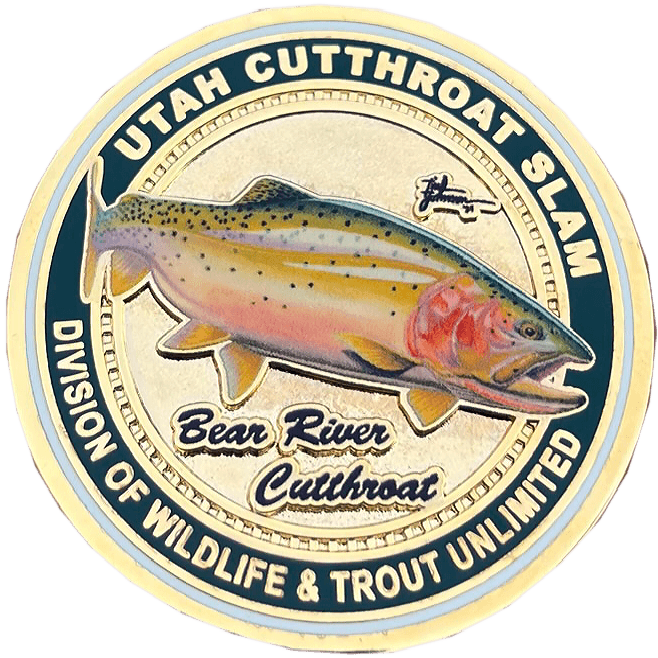
11 Aug Orvis Slam Story, Day Four: Into No Man’s Land
Original story found HERE on Orvis News. Story by Phil Monahan
To catch our third species for the Utah Cutthroat Slam, we had to travel to a part of the state that few residents have ever visited: the Raft River Mountains. Located in the far northwest, on the southern border of Idaho, the region is very sparsely populated ranchland, and the roads you take to get there are a long way from the Interstate. Our base was an old schoolhouse that the Division of Wildlife Resources has converted to a bunkhouse, and we were accompanied by Northern Region Aquatics Manager Paul Thompson, whom we had met the day before. He made the long drive up with Fred and me on the evening of Day Three.

We woke early on Day Four and watched the sun rise over the mountains. After breakfast, we headed to Basin Creek, which runs through a large ranch nearby. The fishing was surprisingly slow–a herd of cattle grazing upstream had muddied the waters quite a bit–and we couldn’t get any trout to rise to dry flies. All three of us tied on small Woolly Buggers and scored our first Yellowstone cutthroats. We were now three quarters of the way toward our goal. We also discovered we had a flat tire, which Fred took care of in record time.


Since Basin Creek had been somewhat of a bust, Paul suggested that we go high into the mountains to a tiny stream called George Creek. The drive up was impressive all by itself, as the arid, dusty landscape got greener and greener the higher we went. When Paul pointed out where the road crossed the stream, Fred and I were astonished because it looked like nothing more than a puddle.


We parked and walked downstream along a rancher’s road, surrounded by large pines and lush vegetation. Fred turned to me and said, in a whisper, “This looks like prime squatch country.” Compared to the sagebrush-and-dust habitat below, this was a remarkable change, just twenty miles and a couple thousand feet in elevation from our previous fishing spot.


When we finally scrambled down the incredibly steep bank to the water, George Creek was just wide enough to jump across, but it featured lots of in-stream debris and plenty of plunge pools. The hard part was getting your fly on the water, as both the backcast and forward cast often featured obstacles. As we had on the North Fork of the Ogden, we resorted to bow-and-arrow casts and dapping, and it seemed that whenever we did manage to get the fly on the water, a cutthroat would slam it.

We only had about two hours of fishing on George Creek, but it was my favorite water of the whole trip. We all caught several stunning Yellowstone cutthroats, and the challenging nature of the casting made for some good fun and the opportunity to heckle whoever was trying to avoid the many plants, sticks, and trees to make a good presentation.

Now, we had just one more species, the Colorado River cutthroat, to catch for our slam. Our schedule called for us to travel six hours to the south—to another little-known Utah region—to seal the deal. Luckily, we had a day and a half to fish, so we were feeling confident.
Come back tomorrow for Part V.
Click here for more information about the Utah Cutthroat Slam.
Click here to read Part I.
Click here to read Part II.
Click here to read Part III.


Sorry, the comment form is closed at this time.